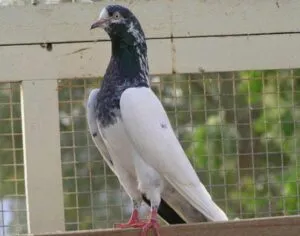Highflyer Pigeons in Pakistan
Highflyer pigeons used to fly in depth of the sky, it is difficult to see them from naked eye. They return once their flight is complete. Highflyer pigeons can fly up to 15-17 hours.
One of the most important factors to notice in highflyer pigeons are the body structure, breast bone and the wings including both the primary and secondary feathers. Some fanciers focus on the bloodline of the pigeon breed. For example, considering the fact whether the parents or grandparents performed well in races or tournaments in past.
The Main breeds of Highflying pigeons in Pakistan are Teddy, Sialkoti, Qasoori and Indian pigeon. Many fanciers obtained outstanding results by cross breeding them.


Flight Time of Pakistani Highflyer Pigeons
Pakistani Highflyer pigeons are a unique breed known for their remarkable endurance and ability to cover long distances. These pigeons possess incredible flying capabilities, often flying for extended periods without a break. In fact, they are capable of flying up to 15 hours in a single flight, which is truly impressive. Some highflyer pigeons have even set records by flying for as long as 17 hours during the summer months, when temperatures often exceed 45 degrees Celsius (113 degrees Fahrenheit). This exceptional feat showcases their strong physical and navigational skills, making them popular among pigeon enthusiasts worldwide.
Records in Middle East
Certainly! Pakistani pigeons have gained considerable recognition and numerous records in the Middle East, particularly in countries like Dubai, Bahrain, Egypt, and Saudi Arabia, where high warm temperatures prevail. These pigeons from Pakistan have demonstrated their exceptional endurance and adaptability, thriving in environments that often pose challenges to other bird species. With their unique characteristics and excellent performance, Pakistani pigeons have not only captivated the hearts of many enthusiasts but have also set a benchmark for the birdkeeping community in the Middle East. Their ability to excel even in extreme weather conditions reflects their resilience and adds to their popularity in the region.










